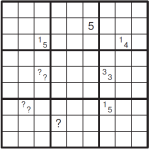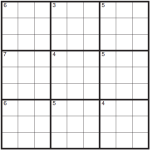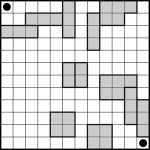Check this post for reference on this blog’s 3 main types of posts from now on. I’ll post smaller sets like this one here, and keep I’m hoping to start a patronage system of my own for bigger sets. More on that later.
Right, just about got this in today. I won’t be home over the weekend, so whether I get a sample of the Instructive tagged post out depends on getting an internet connection where I’ll be staying. I’ll be back on Monday though, so will have it up at latest by Monday night.
This set might seem to have some tough puzzles for a National qualifier (not finals), but I was told that there were many easy puzzles already. Two of the puzzles are types I saw in a book purchased from team Japan at the WPC. It is a collaborative work featuring Serkan Yurekli and many Japanese authors. I’ve changed one rule slightly for Heyawacky block (more an omission than a change) but I prefer it this way personally. Anyway, here they are. Enjoy!
Rules –
484 – Yajilin.
485 – Heyawacky Block – Blacken some cells so that all remaining cells must be connected orthogonally. Any single horizontal or vertical line of white cells cannot traverse more than one thick line. Numbers indicate the amount of black cells in that region. If there is no number, there can be 0 or more black cells. Inside each region, all black cells are connected orthogonally. But black cells must not be orthogonally connected beyond the border lines.
486 – Nurikabe.
487 – Snake BY – Draw in the grid a snake, not touching itself, even diagonally. Each outlined region must contain exactly 3 cells occupied by the snake. The regions that contain the head and the tail of the snake are marked by grey color.























































